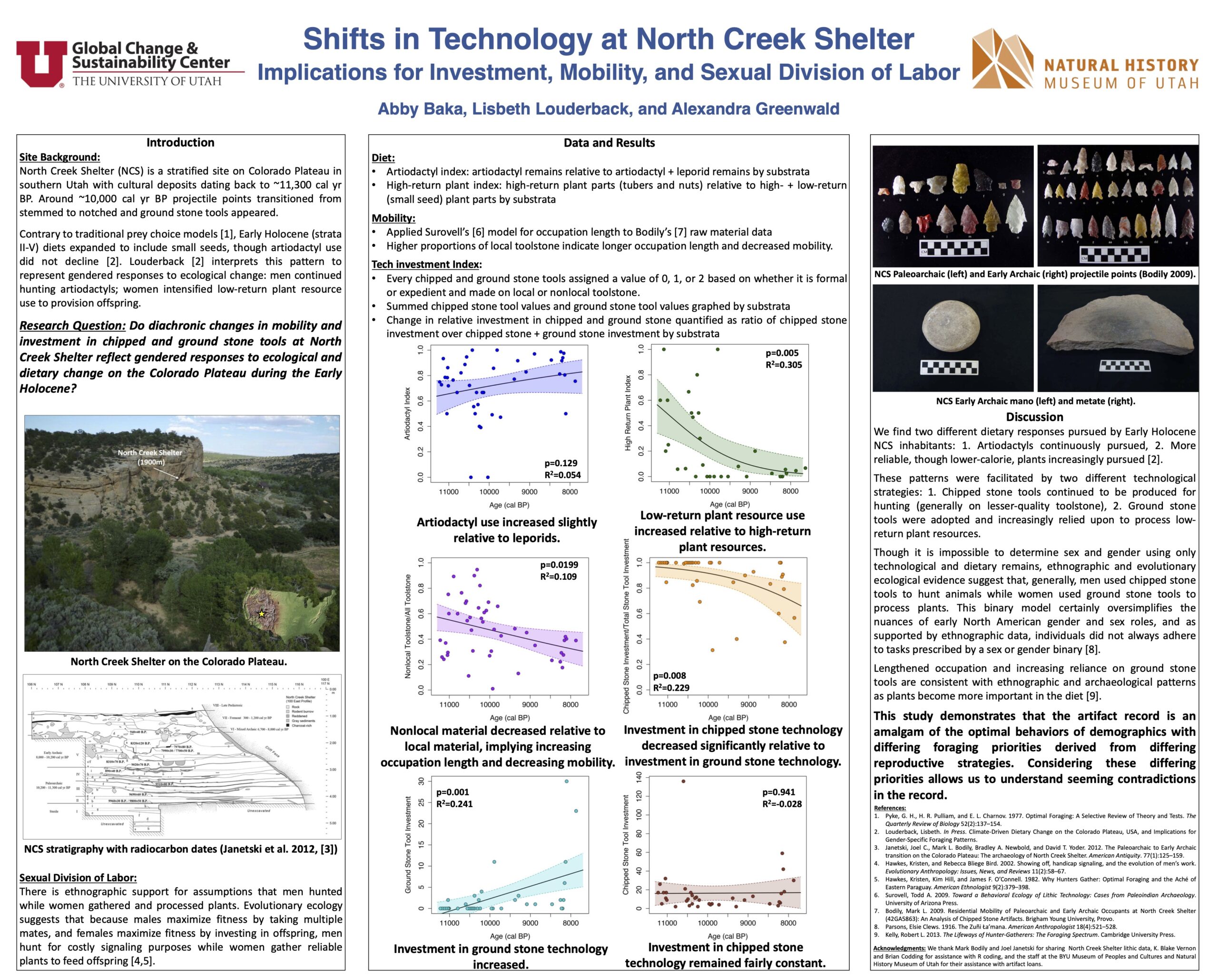Shifts in Technology at North Creek Shelter: Implications for Investment, Mobility, and Sexual Division of Labor
–Abby Baka, Lisbeth Louderback, Alexandra Greenwald
[bs_collapse id=”collapse_bb86-afd7″]
[bs_citem title=”Bio” id=”citem_e610-6c22″ parent=”collapse_bb86-afd7″]
I am a second-year master’s student in the department of anthropology working with Dr. Alexandra Greenwald to explore foraging technologies as the relate to dietary and ecological constraints.
[/bs_citem]
[bs_citem title=”Abstract” id=”citem_eca8-96a7″ parent=”collapse_bb86-afd7″]
The early Holocene archaeological record at North Creek Shelter (NCS) spans ~11,300-8,350 cal BP. We apply behavioral ecological models to NCS’s faunal, botanical, and lithic assemblages to study how technological changes relate to environmental changes and sexual division of labor. Technological change is measured in terms of degree of investment in different tool types relative to changing abundances of resources they are suited to handle. Changing relationships between chipped and ground stone investment and artiodactyl and high-return plant index values are compared to changes in mobility frequency. NCS’s artiodactyl and high-return plant indices suggest that artiodactyl hunting remained steady while the diet expanded to include lower-return plant resources (Louderback 2021). This pattern was interpreted to reflect differing male and female foraging strategies. We suggest that changes in chipped and ground stone technological investment also reflect differences in male and female foraging behaviors, including mobility and dietary resource prioritization.
[/bs_citem]
[bs_citem title=”Narrative” id=”citem_780c-0f71″ parent=”collapse_bb86-afd7″]
Throughout the Early Holocene, human diets at North Creek Shelter (NCS) in southern Utah expanded to include low-return plant resources such as small seeds, even though high-return artiodactyl use did not decline. This pattern contradicts the diet breadth model, which predicts that low-return resources should only enter a diet when high-return resources decrease in abundance. This pattern has been interpreted to represent two differing responses to ecological change: men continued hunting artiodactyls for prestige while women intensified the collection of plant resources to provision offspring. My research addresses the following question: Do diachronic changes in mobility and investment in chipped and ground stone tools at North Creek Shelter reflect gendered responses to ecological and dietary change on the Colorado Plateau during the Early Holocene?
[/bs_citem]
[/bs_collapse]

